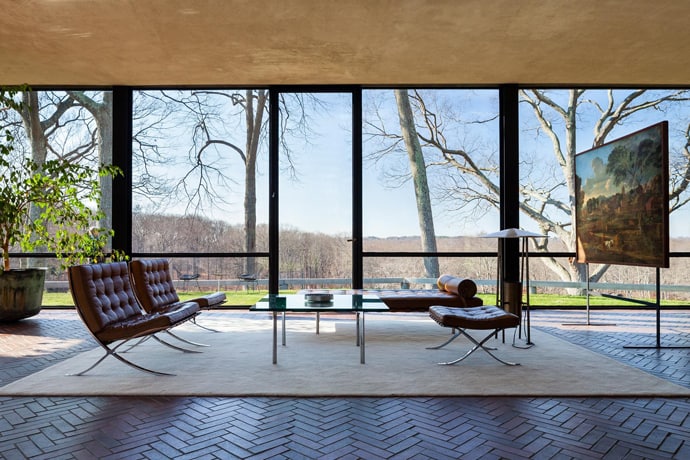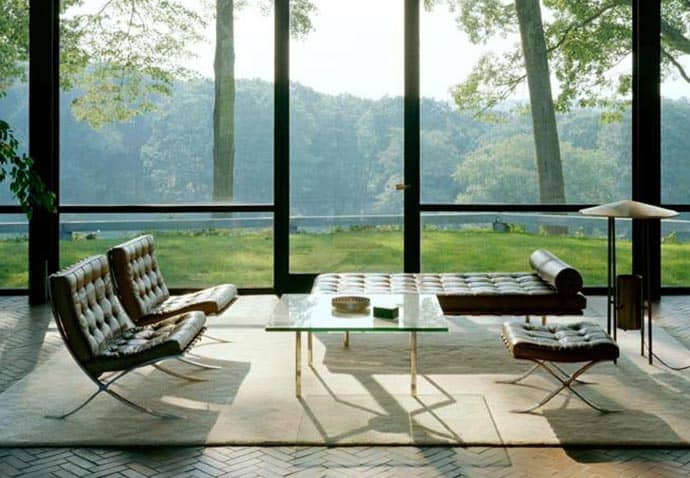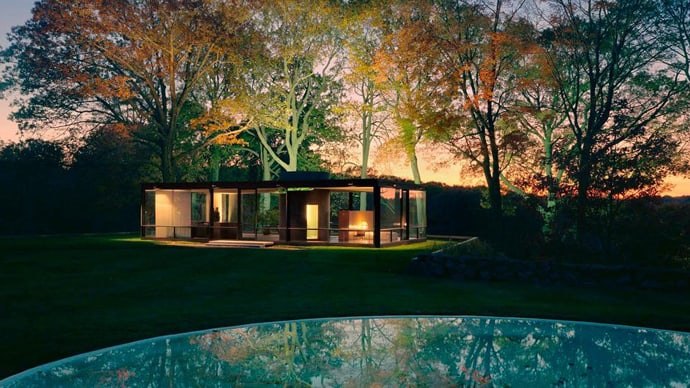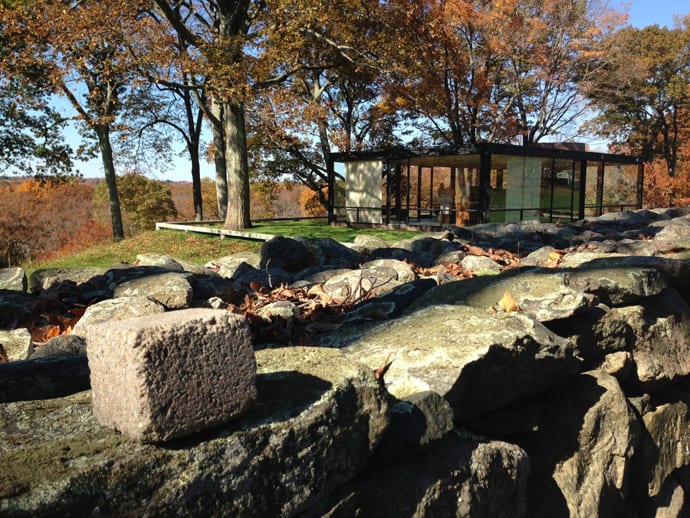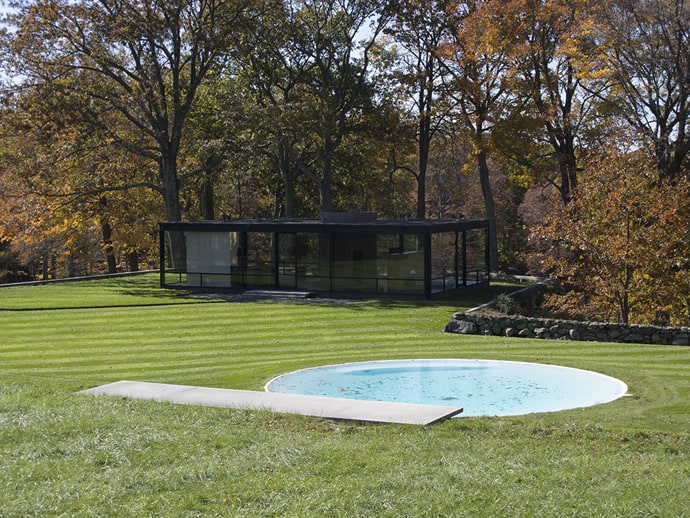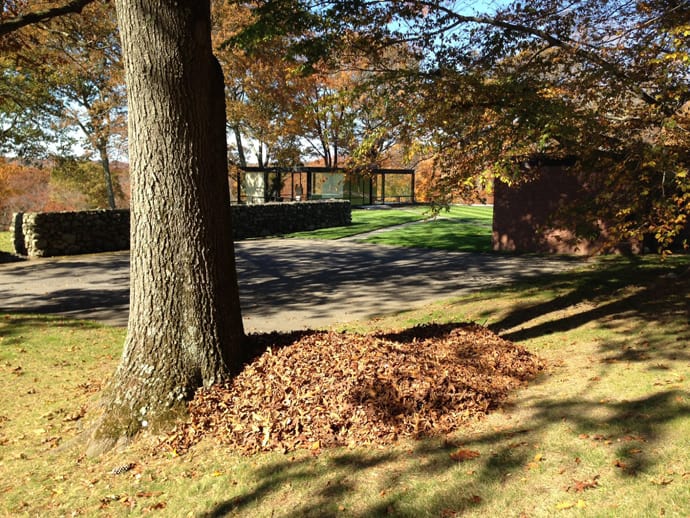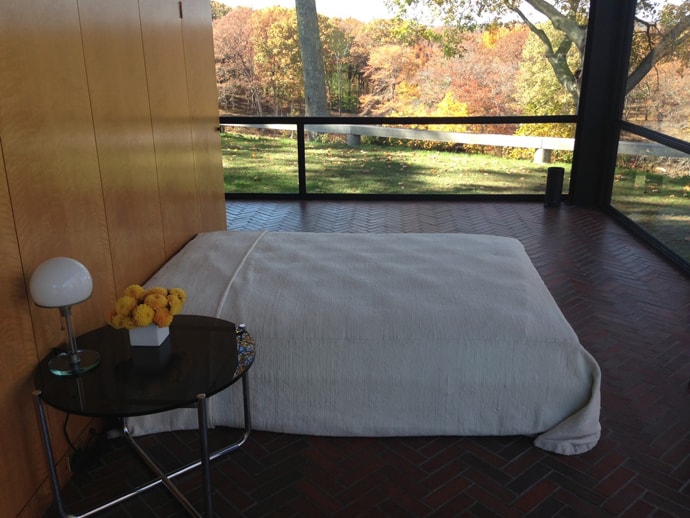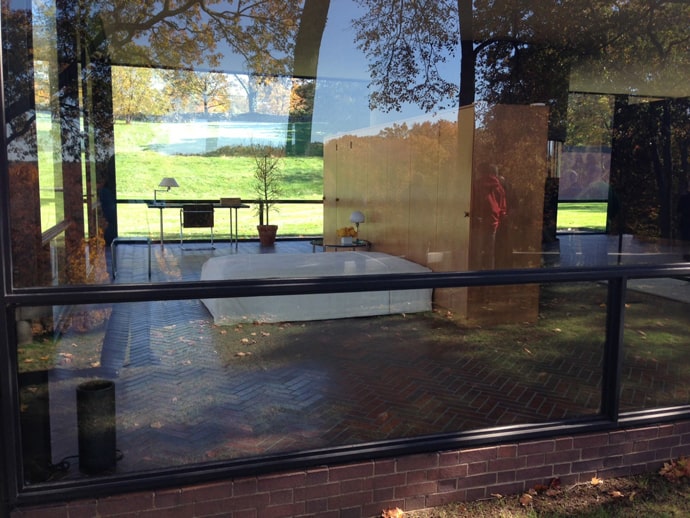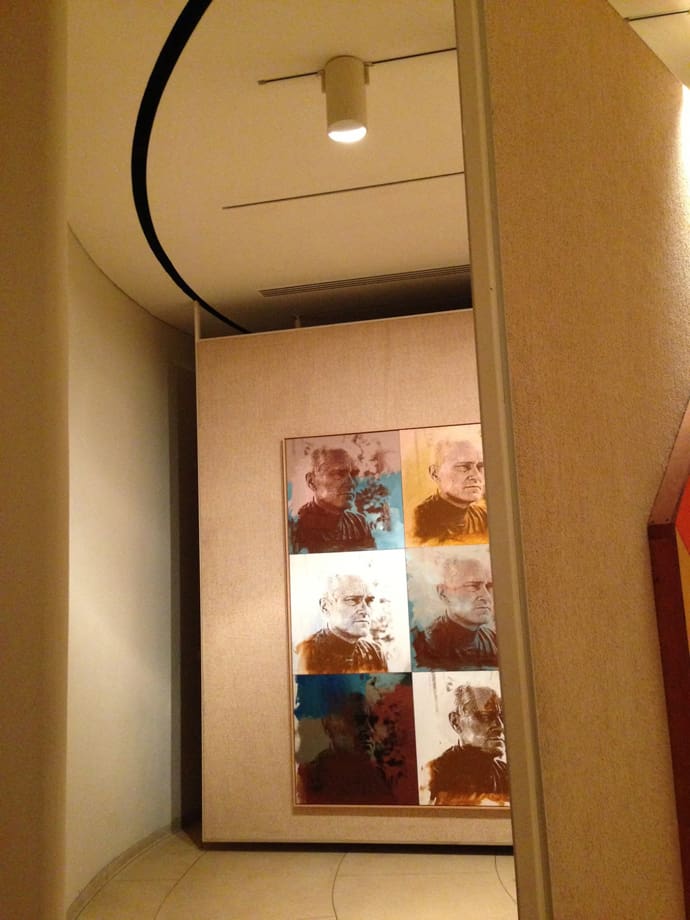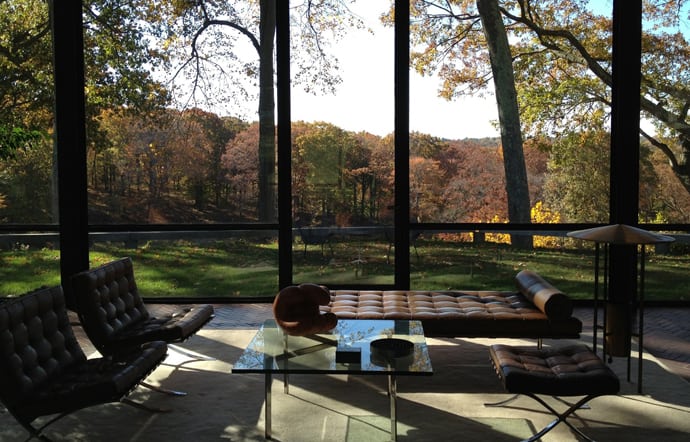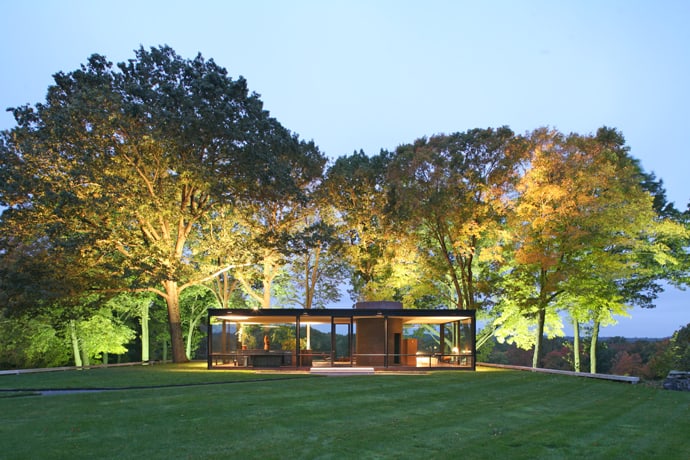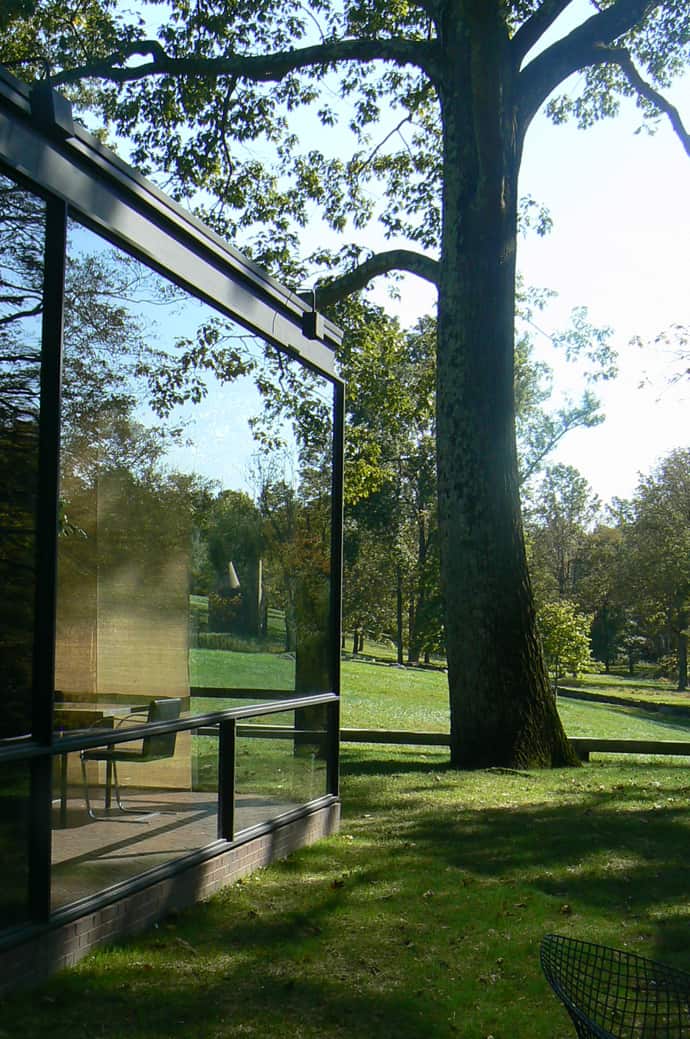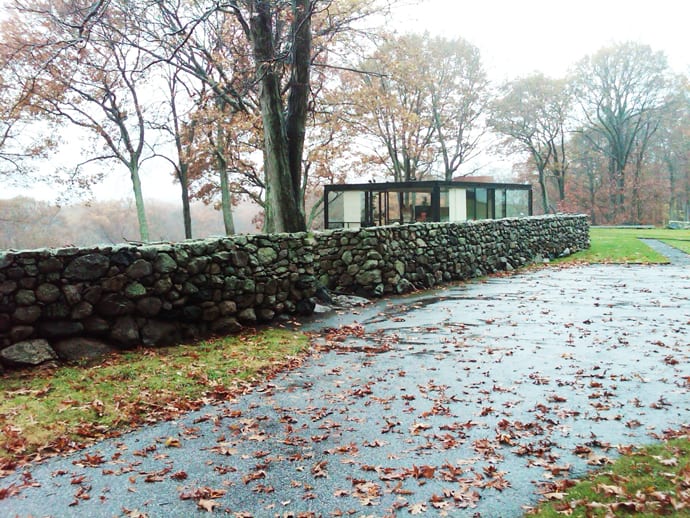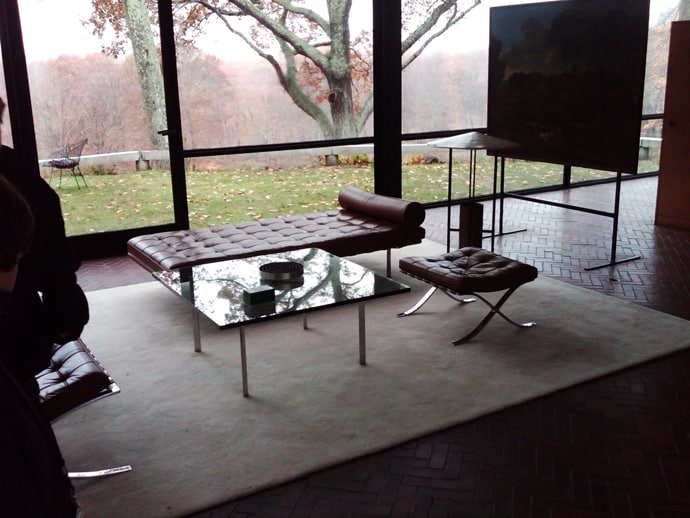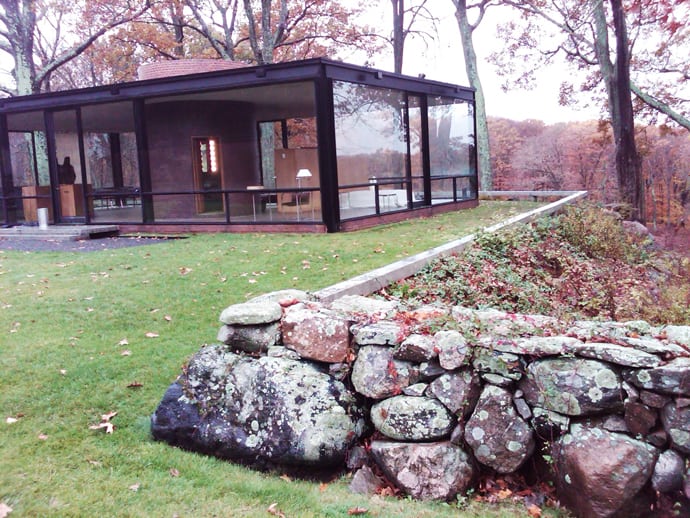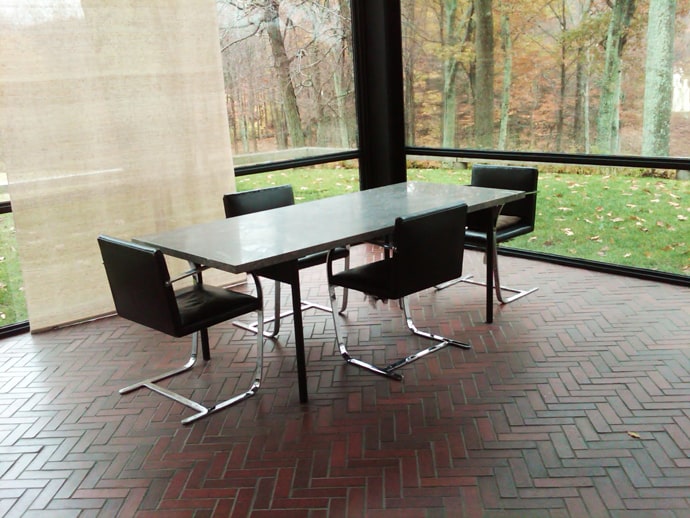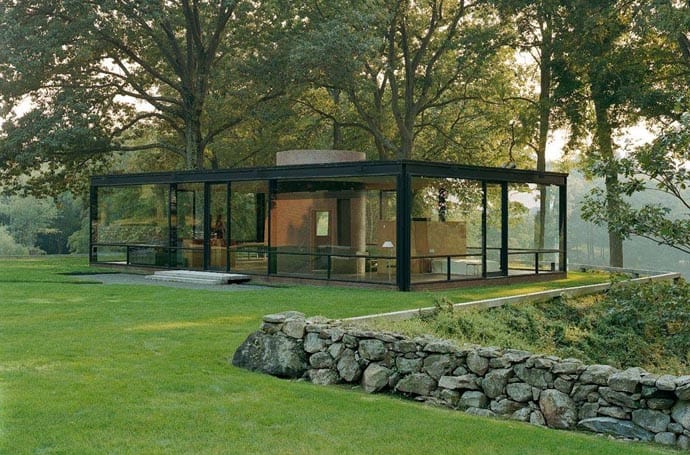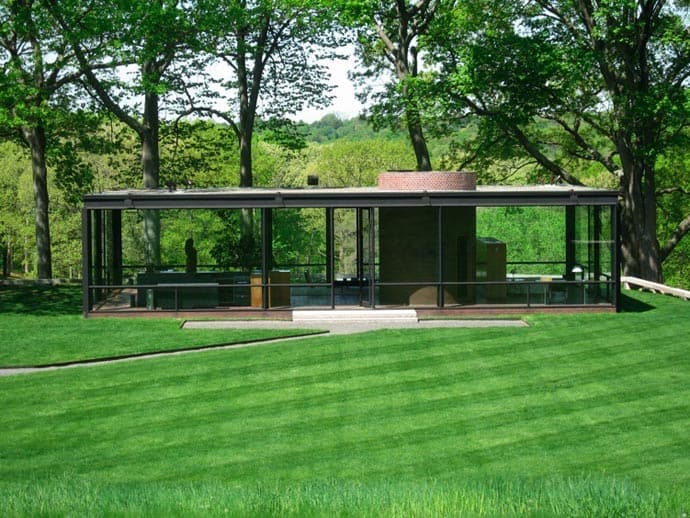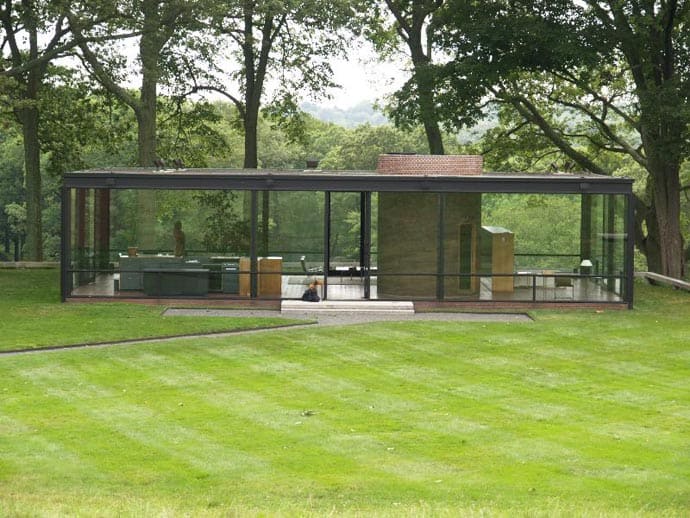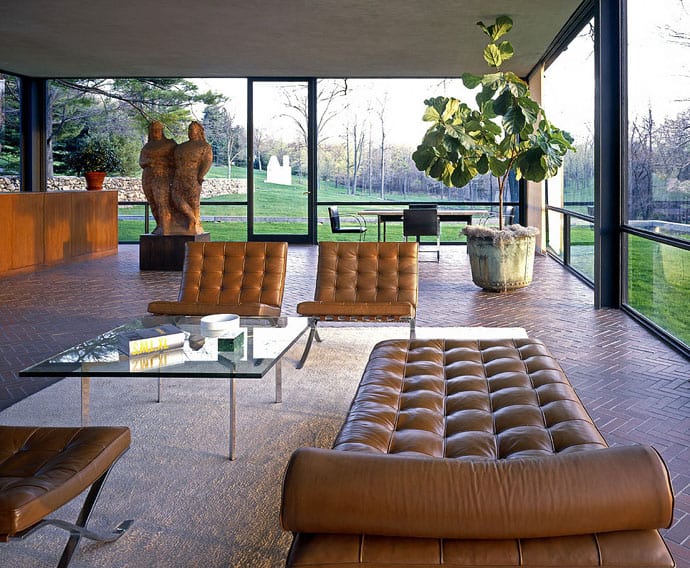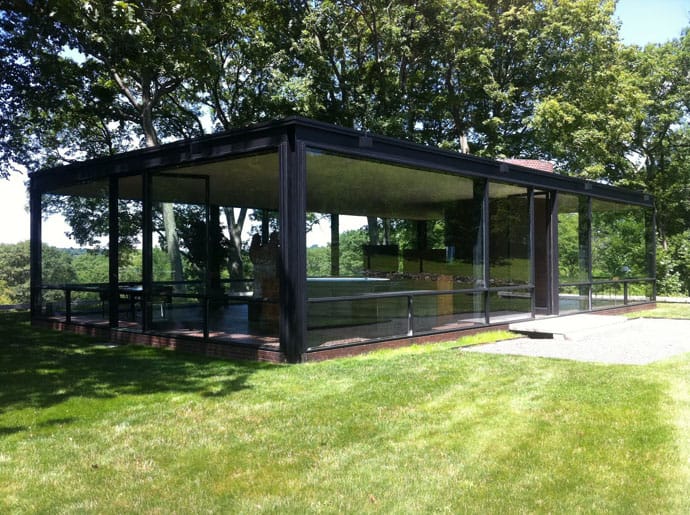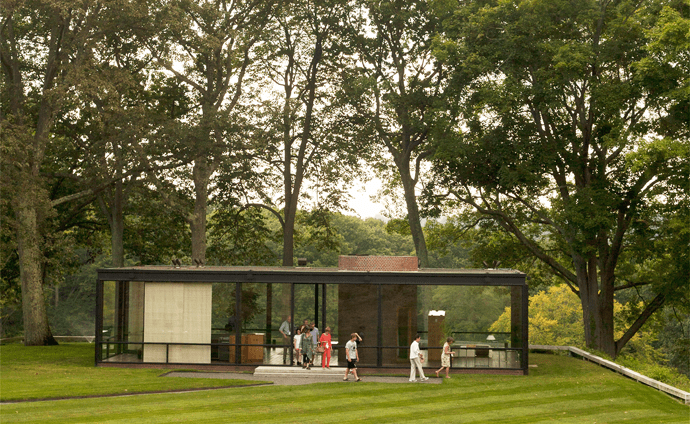Inspired by Mies van der Rohe’s Farnsworth House, the Glass House by Philip Johnson, with its perfect proportions and its simplicity, is considered one of the first most brilliant works of modern architecture. Johnson did not envision it as a place to live so much as a stage… and a statement. Called one of the world’s most celebrated works of Modernism, the glass house was created in 1949. The diminutive glass-and-steel building and its uncluttered interior, which have barely changed in 58 years, are so spare that it is hard to imagine that anyone ever lived there.
Philip Johnson used the Glass House as his private residence, and many of his Bauhaus furnishings remain there. He loved how the ‘wallpaper’ changed all the time, by which he meant the outdoors. It was never the same.” Barbara Hartman, an administrative assistant to architect Philip Johnson, who created the Glass House, the modernist masterpiece pictured above. Its design is simple: an open plan interrupted only by a circular brick bathroom, a kitchen concealed under a sleek walnut folding bar, and ventilation provided by floor-to-ceiling doors on all sides that can be opened to the four winds. Although Mr. Johnson and Mr. Whitney, an art curator, were avid collectors, only two artworks are on display: a statue by Elie Nadelman and a painting attributed to the 17th-century artist Nicolas Poussin, on a two-legged stand in the middle of the space. “I don’t think clutter was allowed,” said the painter Jasper Johns, a friend of both men. “One was always aware of their ruthless elegance.”
The Glass House is now open to the public, with tours booked many months in advance. For information and tour reservations, visit philipjohnsonglasshouse.org.

